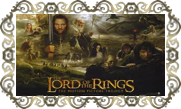

The first part of The History of The Hobbit by John D. Rateliff, a new study of J.R.R. Tolkien’s The Hobbit, has been published today. The two-volume work will contain Tolkien’s previously unpublished original drafts of the novel, accompanied by commentary written by the author. It will also detail Tolkien’s various revisions to The Hobbit, including abandoned revisions for the unpublished third edition of the work, intended for 1960, as well as previously unpublished original maps and illustrations drawn by Tolkien himself.
The Second volume is scheduled to be published on June 4, 2007. A boxed set combining The Hobbit with The History of The Hobbit has been confirmed for a September publication.
| Publication Date: 17/09/2007 (UK)Price: £40.00 (UK)Binding: HardbackFormat: 222x143mmISBN: 978-0-261-10291-0Extent (approx.): 960 pages Imprint: HarperCollinsRights: OMDivision: HarperEntertainment |
The first volume, released today, is titled The History of The Hobbit: Volume I: Mr. Baggins. This will contain the first half of Tolkien’s draft material for The Hobbit, along with commentary on it. To celebrate the publication of the first part of the History of the Hobbit, I release today the Q&A with John D. Rateliff which was done life during the Children of Hurin Release Party on the 16th of April. The transcripts of the other guests will be released real soon. I did not receive a copy of the book yet, so I'm am unable to review the book right now, hope to post a review real soon. In the mean time I hope you enjoy this Q&A. Q: I am not quite sure but may I ask why it has taken you decades to finish your book on the History of the Hobbit?Partly because it was a big job, partly because I could only work on it part time. The final book came out so long that it's being split into two volumes, about 350,000 words in all. I also do a mound of research for each point, not all of which makes it into the final product. So, it takes me a while.
Q: How you got into contact with Tolkien in the first place?I first discovered his work in Sept. 1973. I first got in touch with the Estate in 1981. I first worked with the manuscripts when I arrived at Marquette later that year.It's a great regret of mine that I never met Tolkien personally, though I did manage to meet some of the Inklings. I also got to meet Christopher Wiseman, the last surviving member of the TCBS.
Q: How you got into the Marquette University?I applied there for the Ph.D. program and was accepted, teaching freshmen as a T.A. while taking courses and writing the dissertation. All the Tolkien work was done on a volunteer basis, in my spare time, much of it in conjunction with Taum Santoski. The dissertation, by the way, was on another fantasy writer, Lord Dunsany.
Q: Taum Santoski must have been a great person?Taum was an amazing Tolkien scholar, whose special interest was the invented languages and, later, Tolkien's illustrations. His death was a major loss to Tolkien studies and of course to me personally.
Q: Much too early!Yes, age 32.
Q: I am sorry for repeating the question but something like 25 years for a book - that sounds a lot like Tolkien (which is a compliment, in a sense)?Yes, there were complications and delays along the way. First Taum and I were to do it together, with my being Gordon to his Tolkien. That is, he'd prepare the text and I'd do all the notes and commentary. But I had to withdraw from the project to devote time to the dissertation. Then, when he became terminally ill before finishing, he asked if I'd take over and see it through. But his approach and mine were so different that I essentially had to start over again. So there was a long delay right at the start.
Q: Was there something about The Hobbit that appealed to you more so than LOTR, to make you devote so much time studying it?I love both. But Christopher did a splendid job on the LotR manuscripts himself in HME, while H was being rather neglected
Q: Beyond official "manuscripts" that you have access (by Tolkien himself), what other sources have you used in your book(s) in your book - The History of the hobbit.What other sources? Anything relevant I could get my hands on, basically. Many long hours in libraries researching points. Lots of time talking to knowledgeable friends. Drawing on my own earlier research trips to the Wade and the Bodleian.In the final stages, the wonders of the Internet, which made a world of difference tracking down obscure points.
Q: Would knowledgeable friends include people like Gary Hunnewell and Mike Foster? Would you give us some more names?Gary, Mike, Verlyn, Doug, Wayne, Richard, Paul, Christina, and many more-- the list goes on and on …I think the Acknowledgments ran for two solid pages or so.
Q: You have other books that analyze The Hobbit, such as The Annotated Hobbit by Douglas Anderson.Yes, Doug's book is superlative. There were lots of things I didn't have to cover because Doug had already done so. I assume that anyone picking up my book will already have Doug's -- it is, after all, the best text of H in existence. The Annotated Hobbit: it's complementary to my book. Doug covers the entire publication history of the text and I cover the prepublication history
Q: Why do you think Christopher didn't go in to the Hobbit in his HoME?Partly because he was in the middle of such an enormous task -- try counting the number of pages in HME.VI-XII sometime. Partly because he believed Carpenter's claim that the H. ms was very close to the published book and, more importantly, that THE HOBBIT was not originally part of the Legendarium.
Q: How you feel about this?I think I've made a good case that it always was, from the first chapter, part of the Legendarium. How do I feel about having had the chance to do HISTORY OF THE HOBBIT? Lucky!
Q: How is your book different from the Annotated Hobbit?Doug gives the final published text and details every change made since first publication. I give the story of the text up till the point of publication. So our two projects are bookends, complementary. I also had more space to discuss specific points than is possible in marginal annotations.
Q: The History of the Hobbit will be published in two volumes. How does that work?The first volume is out in about three weeks in England, with the US edition to follow sometime in September. Everything up to Thorin and Company's departure from Lake Town goes into Part One; everything from their arrival at the Lonely Mountain on goes in Part Two. Part Two also has the 1944/1947 'second edition' rewrite of the Gollum chapter and the 1960 Hobbit that is, the fragment of what would have been the third edition had Tolkien completed it; a re-write of THE HOBBIT in the style of THE LORD OF THE RINGS. Part One ends on page 467 and Part Two, after its own Table of Contents, starts on page 468. It's a two-volume set on one continuous book, not two companion volumes like the recent COMPANION AND GUIDE.
Q: How long is this 1960 hobbit exactly?It's quite short; he only got as far as the arrival in Rivendell. However, it also includes a detailed timeline of their journey for this first leg of the trip.
Q: How did you like the abandoned rewriting of The Hobbit? Would it have improved the book if finished?The abandoned rewriting is wonderful stuff, but it's not THE HOBBIT. I think he was wise to leave off, but I can't help regretting never finding out what his solutions to some of the disconnects between THE HOBBIT and THE LORD OF THE RINGS would have been.
Q: What do you think are some of the worst "disconnects" between the books?I go into these at some length, but a few include which is oldest: Fili or Kili? Also, if Bilbo tells the dwarves the whole story of the Gollum encounter after rescuing them from the spiders, why does he apologizes to Gloin at the Council of Elrond for not telling him the truth before?
Q: Have you divided the book because the publisher want, as Tolkien had to, or was your choice?The division into two parts was purely a matter of length. The only alternative would have been to go through and leave things out, and I didn't want to go that route if I could possibly avoid it.
Q: So, as Tolkien, if there was your choice, your prefer in one volume?Of course. But practicalities have to be taken into account. Better THE LORD OF THE RINGS in three volumes than no LotR at all!
Q: In a Tolkien exhibition in 1992 there where some unpublished maps of the Hobbit, which have not been published before. Will they be published now?New Maps -- I'm not sure. We were going to do some, but I think they got squeezed out by other pieces that were more important. There will certainly be maps, but most of then have appeared before in ARTIST AND ILLUSTRATOR or THE ANNOTATED HOBBIT. For example, the Frontispiece to Part One will be Fimbulfambi's Map, which first appeared in Christopher Tolkien's Foreword to the 50th anniversary Hobbit. There were five smaller maps that accompanied the original submission to Allen and Unwin, and not all of those made it in. Mainly because two of them were superceded by an early version of what became the Wilderland Map, and I wanted to make sure that got in. There are about twelve plates of art in all, most with two or more pieces on each.
The dust jacket for the book, by the way, is Tolkien's original sketch for the cover. It seemed to make sense to use the draft for the art as the cover for a book giving the draft of the text.
Q: About the additional research not included in The History of The Hobbit, will it find printing in other papers?Some of it may, though probably in unexpected ways. Research is like that. You notice a passage in Tolkien's LETTERS, and five years later it becomes a piece on JRRT and Charles Williams.
In an ideal world, we'd have facsimilies of Tolkien's manuscripts published with transcriptions on facing pages, like the JAMES JOYCE ARCHIVE. But I think that's a half-century away.
I did deposit a line-by-line, stroke-by-stroke transcription of THE HOBBIT manuscript at the Marquette Archives, so that anyone who wants to can use it as a guide for seeing how my book was put together or simply to help them read Tolkien's handwriting. Reading Tolkien's handwriting is something of an art.
Q: Did you find yourself surprised by anything you uncovered when researching for History of the Hobbit?Surprising? Just how strong the connections between THE HOBBIT and the Silmarillion texts were, right from the initial conception. Also, I originally believed Michael Tolkien's stories about the book having originated in the 1920s. And I also accepted Carpenter's idea that the book was abandoned unfinished. It's now clear Tolkien did complete the story, probably in December 1932 or January 1933, and that he didn't start it until summer 1930.
Q: You have, of course, read many books about Tolkien's work, Which do you strongly recommend?Paul Kocher's MASTER OF MIDDLE EARTH is still the best single-volume book on Tolkien's work, especially when paired with Verlyn Flieger's INTERRUPTED MUSIC. Shippey's work does a great job putting Tolkien in context with his academic background. Wayne and Christina's recent books are mines filled with enormous amounts of useful information, the results of many years' reseach. ARTIST AND ILLUSTRATOR is also very good. And of course Doug's bookAnd these are only a few obvious examples, books anyone interested in Tolkien should read and reread.
Q: did you by chance find out how the Hobbit manuscript found its way to the publisher? In The Companion and Guide we have three possible ways it could have happened... maybe you found out more?I think we have Elaine Griffiths' inability to complete the Clark Hall Beowulf revision to thank. When Susan Dagnall showed up to collect the turnover, and it wasn't ready, Griffiths sent her along to Professor Tolkien to borrow his story so her trip from London to Oxford wasn't a total waste. But this is just my best guess; the exact details are unrecoverable.
Q: I find myself intrigued by your claim of the strong connections between The Hobbit and Silmarillion. Care to provide any examples, or do I have to wait for publication?Well, there's the mention of Beren and Luthien in the draft of Chapter One, for starters. The wizard says they don't need to worry about seeking revenge on the Necromancer because Beren and Tinuviel have already thrown down his dark tower. That's a pretty explicit reference to the events of 'The Lay of Leithian', and a pretty good indication to me that Bilbo's world and their world were thought of as one and the same from the very beginning.
Q: Interesting point that which would make Morgoth the Necromancer rather than Sauron?No, it's Sauron the Necromancer in 'The Lay of Leithian', and the destruction of the tower at Tol Sirion. And the Necromancer's flight to Taur-na-Fuin, which I correlate to Mirkwood.Q: When working on The History of The Hobbit, did you find any new information on some of the long lasting mysteries of The Hobbit, like King Bladorthin, the origin of Bilbo’s coat of mail and the wild Were-worms in the Last Desert?Some, yes. Bladorthin was originally the wizard's name. The coat of mail went through a number of changes, which I try to document. And I quite like the Wild Were-worms of the Chinese, as they were originally called.
Q: There is a theory that the coat was originally Eärendil's, does it strike anywhere near the mark?Not possible in the original conception, where it's one of several made for the King of Dale's sons -- note the plural. There's also no mithril, of course, in the original; that idea came later. One of the hardest things to do when reading THE HOBBIT is not to import in ideas from later works.
Q: So it is not possible that the "young elf-prince long ago" the coat was wrought for (according to the published version) is Eärendil?It’s not possible within the original conception, but it could be argued from the final text looking back. Plenty of issues, like the confusion between whether Thror or Thrain was Thorin's grandfather, I hope the book will clarify.
Q: Did any other words like 'chinese' turn up in your research? words from outside Middle-earth that is?Chinese, Shetland Ponies, Hindu Kush, the Gobi Desert -- there were a few, all in the early chapters and all later eliminated. By the way, the mix of real-world and fantastical locations is v. typical of Lord Dunsany, whose work was a big influence on JRRT early on. Though not so big an influence as Wm Morris.
Q: Will you list these?They're not listed, but each is discussed when it comes up.
Q: What is the subject that you preferred in Tolkien's world... some people prefere languages, other history, …Yes, Taum loved the languages best. With me it's the trees. With others, the battle-scenes, or the muted love story in the background, or the characters.
Q: The trees? The history of the Trees of Valinor?No, Tolkien's treatment of trees throughout his work, and his obvious love for them, was what first attracted me to his books.
Q: What are you working on now?I'm giving Part Two a final proofing, then I need to work on the lecture I'm giving at Marquette this fall. And there are lots of other projects that have had to be put off for a long time that I'm looking forward to getting back to.
Q: Interesting! Tolkien related projects?Of course!Q: About what is your lecture at Marquette this fall?The topic for the lecture isn't set yet, but it will have something to do with Tolkien as a literary craftsman. That is, a look at HOW he wrote, since there's been so much focus on what he wrote about already. And of course it will rely heavily on specific examples in the manuscripts.
Q: is it a coincidence that this year we celebrate 70 years The Hobbit and we will see the publication of your book?The 70th anniversary is a lucky coincidence, one I'm very happy about.
Q: in the beginning of the Q&A you said you got in contact with the estate in 1981... what was this for?I was working at the time on SONGS FOR THE PHILOLOGISTS. Specially, I was trying to locate a copy of the Leeds version that preceded the University College London version. Interestingly enough, the evidence I turned up suggests that some of the texts in the printed version had been rewritten, not by Tolkien, but by A. H. Smith.
Q: Never heard about this? Did you publish about this?Alas I never succeeded in gaining access to a copy of the Leeds version. Only one copy is known to exist, and it's not accessible. But finding out at least one survived was a relief; maybe someday someone will be able to complete that project.
Q: Your book is about the history of the publication of the Hobbit... but in England... and in other countries, the translations, do you speak about this process about the relations of Tolkien and the other publishers of other countries?No, while that's an interesting topic it would have taken me too far afield from my main focus, which was the story of the text up till the time of publication.Someone needs to write a book someday on "TOLKIEN AND HIS PUBLISHER". The relationship is exceptionally well documented, and it's an interesting story.
Q: Didn't Rayner Unwin wrIte something about editing Tolkien?Yes, Rayner wrote a wonderful memoir that's both moving and very sad, about the fall of the House of Unwin. Highly recommended. Here is the info:GEORGE ALLEN AND UNWIN: A REMEMBRANCER, by Rayner Unwin, 1999. Privately Printed by Merlin Unwin Books.
There's a vast archive of letters between Tolkien and ALLEN AND UNWIN; someday years from now they'll make the basis of an excellent book.Unfortunately Carpenter is gone now too. Even though I ended up disagreeing with him on several important points, I'm very grateful to Carpenter both for the help he gave me during my first two visits to Oxford and for writing his biography. Despite its obvious flaws, it really holds up v. well almost thirty years later.
Q: A Remembrancer was printed Privately?Yes, ALLEN AND UNWIN was gone by that time, having been absorbed into HarperCollins.
Q: Is the Hobbit your favourite book by Tolkien?My favorites are THE LORD OF THE RING and THE HOBBIT, with FARMER GILES OF HAM coming in third I suppose. THE LOST ROAD and THE NOTION CLUB PAPERS are also somewhere up there.
Q: If you could ask something to Tolkien hismelf, what you asked?There are so many things I'd have liked to ask Tolkien that I couldn't possibly narrow it down to just one and would probably have just wound up thanking him, profusely, for writing those books.
Spread the news about this J.R.R. Tolkien article:
Read more http://goo.gl/YOWvhg














